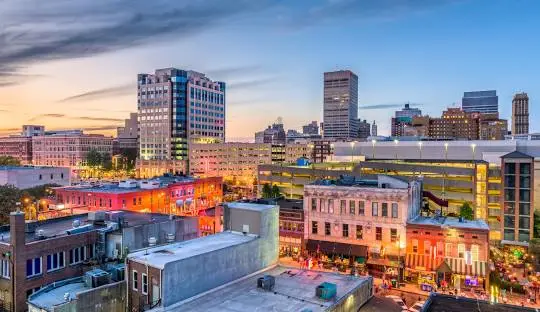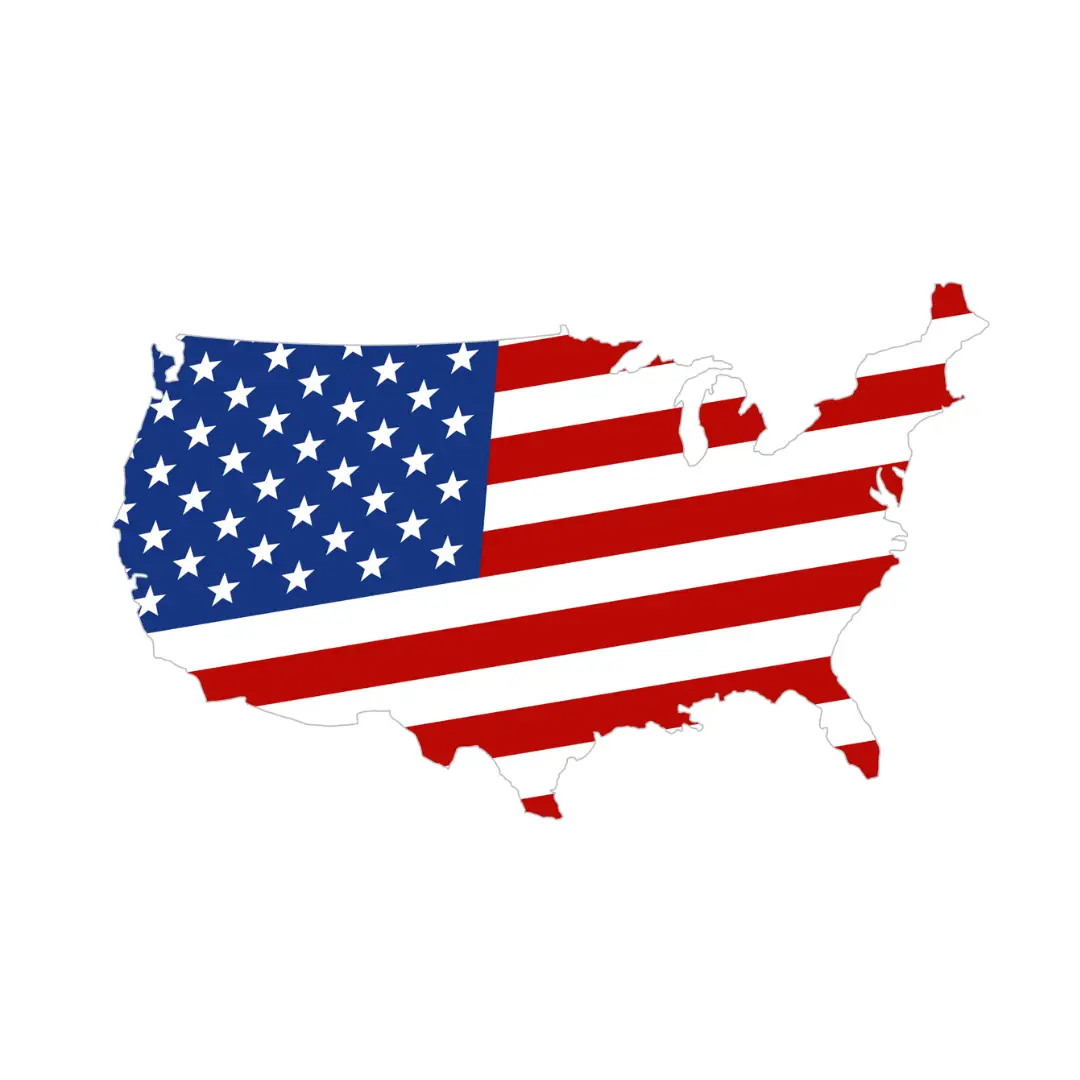Study MBBS in USA
USA COUNTRY PROFORMA
About The USA
The United States of America is the third-largest country in the world both geographically and populously. North America is a continent with the Pacific and Atlantic oceans to its west and east, respectively. Canada forms the northern border, while Mexico forms the southern border. The District of Columbia and the 50 states make up the union.
The United States features a large central plain and tall mountains in the west, making it more than twice the size of the European Union. At -282 feet (-86 meters), Death Valley has the lowest point in the nation, and Denali (Mt. McKinley), at 20,320 feet (6,198 meters), has the highest peak.
WDOMS List of MBBS College in USA
- T. Still University Kirksville College of Osteopathic Medicine – Kirksville
- T. Still University School of Osteopathic Medicine in Arizona- Mesa
- Alabama College of Osteopathic Medicine – Dothan
- Albany Medical College – Albany
- Albert Einstein College of Medicine – Bronx
- Arkansas College of Osteopathic Medicine – Fort Smith
- Baylor College of Medicine – Houston
- Boston University School of Medicine – Boston
- Brody School of Medicine at East Carolina University – Greenville
- Burrell College of Osteopathic Medicine at New Mexico State University – Las Cruces
- California Health Sciences University College of Osteopathic Medicine – Clovis
- California Northstate University College of Medicine – Elk Grove
- California University of Science and Medicine School of Medicine – San Bernardino
- Campbell University Jerry M. Wallace School of Osteopathic Medicine – Lillington
- Carle Illinois College of Medicine – Champaign
- Case Western Reserve University School of Medicine – Cleveland
- Central Michigan University College of Medicine – Mount Pleasant
- Charles E. Schmidt College of Medicine at Florida Atlantic University – Boca Raton
- Chicago Medical School, Rosalind Franklin University of Medicine & Science -North Chicago
- Columbia University Vagelos College of Physicians and Surgeons – New York
- Cooper Medical School of Rowan University – Camden
- Creighton University School of Medicine – Omaha
- CUNY School of Medicine – New York
- David Geffen School of Medicine at UCLA – Los Angeles
- Dell Medical School at the University of Texas at Austin – Austin
- Des Moines University College of Osteopathic Medicine – Des Moines
- Donald and Barbara Zucker School of Medicine at Hofstra/Northwell – Hempstead
- Drexel University College of Medicine – Philadelphia
- Duke University School of Medicine – Durham
- Eastern Virginia Medical School – Norfolk
- Edward Via College of Osteopathic Medicine Auburn – Auburn
- Edward Via College of Osteopathic Medicine Carolinas – Spartanburg
- Edward Via College of Osteopathic Medicine Louisiana – Monroe
- Edward Via College of Osteopathic Medicine Virginia – Blacksburg
- Elson S. Floyd College of Medicine, Washington State University – Spokane
- Emory University School of Medicine – Atlanta
- Escuela de Medicina San Juan Bautista – Caguas
- F Edward Hébert School of Medicine, Uniformed Services University of the Health Sciences – Bethesda
- FIU Herbert Wertheim College of Medicine – Miami
- Florida State University College of Medicine – Tallahassee
- Frank H. Netter MD School of Medicine at Quinnipiac University – North Haven
- Geisel School of Medicine at Dartmouth – Hanover
- Geisinger Commonwealth School of Medicine – Scranton
- George Washington University School of Medicine and Health Sciences – Washington
- Georgetown University School of Medicine – Washington
- Hackensack Meridian School of Medicine – Nutley
- Harvard Medical School – Boston
- Howard University College of Medicine – Washington
- Icahn School of Medicine at Mount Sinai – New York
- Idaho College of Osteopathic Medicine – Meridian
- Indiana University School of Medicine – Indianapolis
- Jacobs School of Medicine and Biomedical Sciences, University at Buffalo – Buffalo
- Joan C. Edwards School of Medicine at Marshall University – Huntington
- John A. Burns School of Medicine, University of Hawaii at Manoa – Honolulu
- Johns Hopkins University School of Medicine – Baltimore
- Kaiser Permanente Bernard J. Tyson School of Medicine – Pasadena
- Kansas City University of Medicine & Biosciences College of Osteopathic Medicine – Kansas City
- Keck School of Medicine of the University of Southern California – Los Angeles
- Kirk Kerkorian School of Medicine at UNLV – Las Vegas
- Lake Erie College of Osteopathic Medicine – Bradenton – Bradento
- Lake Erie College of Osteopathic Medicine – Erie
- Lewis Katz School of Medicine at Temple University – Philadelphia
- Liberty University College of Osteopathic Medicine – Lynchburg
- Lincoln Memorial University DeBusk College of Osteopathic Medicine- Harrogate
- Loma Linda University School of Medicine – Loma Linda
- Louisiana State University School of Medicine in New Orleans – New Orleans
- Louisiana State University School of Medicine in Shreveport – Shreveport
- Marian University College of Osteopathic Medicine – Indianapolis
- Mayo Clinic Alix School of Medicine – Rochester
- McGovern Medical School at The University of Texas Health Science Center at Houston – Houston
- Medical College of Georgia – Augusta
- Medical College of Wisconsin – Milwaukee
- Medical University of South Carolina – Charleston
- Meharry Medical College School of Medicine – Nashville
- Mercer University School of Medicine – Macon
- Michigan State University College of Human Medicine – East Lansing
- Michigan State University College of Osteopathic Medicine – East Lansing
- Midwestern University Arizona College of Osteopathic Medicine – Glendale
- Midwestern University Chicago College of Osteopathic Medicine – Downers Grove
- Morehouse School of Medicine – Atlanta
- New York Institute of Technology College of Osteopathic Medicine – Old Westbury
- New York Medical College – Valhalla
- Noorda College of Osteopathic Medicine – Provo
- Northeast Ohio Medical University (NEOMED) – Rootstown
- Northwestern University Feinberg School of Medicine – Chicago
- Nova Southeastern University Dr. Kiran C. Patel College of Allopathic Medicine – Fort Lauderdale
- Nova Southeastern University Dr. Kiran C. Patel College of Osteopathic Medicine Fort Lauderdale – Fort Lauderdale
- NYU Grossman School of Medicine – New York
- NYU Long Island School of Medicine – Mineola
- Oakland University William Beaumont School of Medicine – Rochester
- Ohio University Heritage College of Osteopathic Medicine Athens – Athens
- Oklahoma State University Center for Health Sciences College of Osteopathic Medicine – Tulsa
- Oregon Health and Science University School of Medicine – Portland
- Pacific Northwest University of Health Sciences College of Osteopathic Medicine – Yakima
- Paul L. Foster School of Medicine, Texas Tech University – El Paso
- Penn State University College of Medicine – Hershey
- Perelman School of Medicine at University of Pennsylvania – Philadelphia
- Philadelphia College of Osteopathic Medicine – Philadelphia
- Philadelphia College of Osteopathic Medicine, Georgia Campus – Suwanee
- Ponce Health Sciences University School of Medicine – Ponce
- Quillen College of Medicine, East Tennessee State University – Johnson City
- Renaissance School of Medicine at Stony Brook University – Stony Brook
- Rocky Vista University College of Osteopathic Medicine – Parker
- Rowan-Virtua School of Osteopathic Medicine – Stratford
- Rush Medical College of Rush University – Chicago
- Rutgers New Jersey Medical School – Newark
- Rutgers Robert Wood Johnson Medical School – Piscataway
- Saint Louis University School of Medicine – St. Louis
- Sam Houston State University College of Osteopathic Medicine – Conroe
- Sanford School of Medicine of the University of South Dakota – Sioux Falls
- Sidney Kimmel Medical College at Thomas Jefferson University – Philadelphia
- Southern Illinois University School of Medicine – Springfield
- Stanford School of Medicine – Stanford
- Stritch School of Medicine, Loyola University of Chicago – Maywood
- SUNY Downstate Medical Center College of Medicine – Brooklyn
- SUNY Upstate Medical University College of Medicine – Syracuse
- TCU Burnett School of Medicine – Fort Worth
- Texas A&M University School of Medicine – Bryan
- Texas Tech University Health Sciences Center School of Medicine – Lubbock
- The Ohio State University College of Medicine – Columbus
- Tilman J. Fertitta Family College of Medicine, University of Houston – Houston
- Touro College of Osteopathic Medicine – New York
- Touro University College of Osteopathic Medicine, California – Vallejo
- Touro University Nevada College of Osteopathic Medicine – Henderson
- Tufts University School of Medicine – Boston
- Tulane University School of Medicine – New Orleans
- UC Davis School of Medicine – Sacramento
- UC Riverside School of Medicine – Riverside
- UC San Diego School of Medicine – La Jolla
- UMass Chan Medical School – Worcester
- Universidad Central del Caribe School of Medicine – Bayamón
- University of Alabama Heersink School of Medicine – Birmingham
- University of Arizona College of Medicine Phoenix – Phoenix
- University of Arizona College of Medicine Tucson – Tucson
- University of Arkansas for Medical Sciences College of Medicine – Little Rock
- University of California, Irvine, School of Medicine – Irvine
- University of California, San Francisco, School of Medicine – San Francisco
- University of Central Florida College of Medicine – Orlando
- University of Chicago Pritzker School of Medicine – Chicago
- University of Cincinnati College of Medicine – Cincinnati
- University of Colorado School of Medicine – Aurora
- University of Connecticut School of Medicine – Farmington
- University of Florida College of Medicine – Gainesville
- University of Illinois College of Medicine – Chicago
- University of Iowa Carver College of Medicine – Iowa City
- University of Kansas School of Medicine – Kansas City
- University of Kentucky College of Medicine – Lexington
- University of Louisville School of Medicine – Louisville
- University of Maryland School of Medicine – Baltimore
- University of Miami Miller School of Medicine – Miami
- University of Michigan Medical School – Ann Arbor
- University of Minnesota Medical School – Minneapolis
- University of Mississippi School of Medicine – Jackson
- University of Missouri Kansas City School of Medicine – Kansas City
- University of Missouri School of Medicine – Columbia
- University of Nebraska College of Medicine – Omaha
- University of Nevada School of Medicine – Reno
- University of New England College of Osteopathic Medicine – Biddeford
- University of New Mexico School of Medicine – Albuquerque
- University of North Carolina School of Medicine – Chapel Hill
- University of North Dakota School of Medicine and Health Sciences – Grand Forks
- University of North Texas Health Science Center Texas College of Osteopathic Medicine – Fort Worth
- University of Oklahoma College of Medicine – Oklahoma City
- University of Pikeville Kentucky College of Osteopathic Medicine – Pikeville
- University of Pittsburgh School of Medicine – Pittsburgh
- University of Puerto Rico School of Medicine – San Juan
- University of Rochester School of Medicine and Dentistry – Rochester
- University of South Alabama Frederick P. Whiddon College of Medicine – Mobile
- University of South Carolina School of Medicine – Columbia
- University of South Carolina School of Medicine Greenville – Greenville
- University of Tennessee Health Science Center College of Medicine – Memphis
- University of Texas Medical Branch School of Medicine – Galveston
- University of Texas Medical School at San Antonio – San Antonio
- University of Texas Rio Grande Valley School of Medicine – Brownsville
- University of Texas Southwestern Medical School – Dallas
- University of the Incarnate Word School of Osteopathic Medicine – San Antonio
- University of Toledo College of Medicine – Toledo
- University of Utah School of Medicine – Salt Lake City
- University of Vermont Larner College of Medicine – Burlington
- University of Virginia School of Medicine – Charlottesville
- University of Washington School of Medicine – Seattle
- University of Wisconsin School of Medicine and Public Health – Madison
- USF Health Morsani College of Medicine – Tampa
- Vanderbilt University School of Medicine – Nashville
- Virginia Commonwealth University School of Medicine – Richmond
- Virginia Tech Carilion School of Medicine – Roanoke
- Wake Forest University School of Medicine – Winston-Salem
- Warren Alpert Medical School of Brown University – Providence
- Washington University School of Medicine in St. Louis – St. Louis
- Wayne State University School of Medicine – Detroit
- Weill Cornell Medical College – New York
- West Virginia School of Osteopathic Medicine – Lewisburg
- West Virginia University School of Medicine – Morgantown
- Western Michigan University Homer Stryker M.D. School of Medicine – Kalamazoo
- Western University of Health Sciences College of Osteopathic Medicine of the Pacific – Pomona
- William Carey University College of Osteopathic Medicine – Hattiesburg
- Wright State University Boonshoft School of Medicine – Dayton
- Yale School of Medicine – New Haven
Climate at USA
Through its effects on vegetation, soils, and wildlife, climate has an impact on human habitats both directly and indirectly. However, thousands of years of Indian habitation combined with nearly four centuries of European colonization have significantly changed the natural environment in the United States.
Nevertheless, “wild” conditions quickly reappear wherever land is abandoned, eventually establishing a dynamic equilibrium between soils, vegetation, and the unyielding demands of climate. The United States can therefore be classified into a mosaic of bioclimatic regions, each distinguished by unique climatic conditions and each with the potential for vegetation and soil that would eventually return in the absence of humans, even though Americans have created an artificial environment of continental proportions. The primary exception to this generalization pertains to the fauna, which has undergone such drastic changes that it is nearly hard to predict what kind of animal geography would return to certain regions of the United States in the event that humans disappeared from the area.
Study MBBS in the USA
For many ambitious students, pursuing an MBBS degree in the USA is their ideal scenario. Despite its difficulties, the educational system is renowned for its theoretical and practical hands-on training. The first thing a student thinks about when considering MBBS study in the United States after completing their 12th grade education is “How.” Obtaining accurate and trustworthy information is essential when making decisions.
The MBBS program in the United States is a postgraduate degree, not a bachelor’s degree like in India. In the United States, MBBS is equivalent to a doctor of medicine (MD) due to its extensive curriculum and educational journey. There are some fundamental qualifying requirements that you must be aware of if you intend to apply for an MBBS in the US.
Indian students can apply to the MBBS program in the USA if they have completed the 12th grade and have chosen Physics, Chemistry, and Biology as their specialization subjects. For all residents of India, passing the NEET exam is a requirement.
MBBS for Indian Students in USA
Indian medical students typically hope to complete their MBBS studies in the United States. People and cultures from all over the world have blended to form the nation. Choosing to pursue an MBBS degree in the United States is among the best choices a student can make. India has a lot of opportunities in the USA because MBBS is so popular there. One advantage of studying in the USA is that graduates are exempt from taking the FMGE exam when they return to practice in India. The American universities are accredited by the Indian Medical Council, allowing their graduates to practice medicine in their native country.
Some of the most prominent hospitals in the world are home to a large number of accomplished Indian physicians who completed their MBBS programme in America. Indian students studying in the US will encounter a completely different culture and may even go through a phase of culture shock, but in time, they will grow to love their time there.
The fact that the USA is an English-speaking nation means that communication will never be a problem when you study there. But getting into US universities is not an easy process. A solid mentality and strong willpower are necessary to pass the entrance exams. Even classes are taken by students as preparation for them. The MCAT is required of applicants to medical schools, and non-native speakers who want to enroll in English-speaking universities must take the TOEFL or IELTS as a standardized test of English language proficiency. Plant-based diets are becoming more and more popular, so vegetarians don’t have to worry about not getting enough nutrients.
Advantages of studying medicine in USA for Indian Students
- American universities provide a well-thought-out curriculum in addition to numerous practical courses.
- Every student gets individual attention, and the teacher-to-student ratio is good.
- Students can take part in international competitions in addition to international research projects.
- At American universities, students can participate in cultural events as a way to unwind from their studies.
- Students in the USA can become familiar with the cultures and customs of other countries because of the diversity of the student body.
- The campus and the surrounding area are welcoming to students studying medicine in the United States.
- Employees are well known for being incredibly supportive to students.
- Professors who provide guidance and student guides help students adjust to university life.
- With the help of the university, students can travel to class with ease.
- Students from other countries can confidently study MBBS in the USA, which is undoubtedly very relieving for them.
- Universities also strongly support nondiscrimination on the basis of caste, creed, or gender, and anti-ragging committees.
- Indian students can obtain very competitive interest rates on their student loans from Indian banks.
- Students can apply for a visa easily, and the majority of their applications are granted.
- Donation and capitalization fees to the university are not assessed.
- Clinical Rotations is one of the three phases of MBBS in the United States. During clinical rotations, students can help doctors and participate in patient care under the guidance of experienced professionals while gaining clinical experience at some of the best hospitals in the US and overseas.
- Anywhere in the world that offers postgraduate medical education can accept graduates of American MBBS programmes. After graduating from medical school in the US, students typically pursue a three-year residency programme there.
- Good facilities are available to medical students pursuing an MBBS in the United States on university campuses.
Disadvantages of studying medicine in USA for Indian Students
High Cost : The cost of living in the United States is extremely high, in addition to the costs associated with education. The cost of living in the nation is rising in tandem with the value of the dollar. For a student, an annual increase in costs that is so exponential can be unsustainable. The option becomes more limited to the elite few because the average Indian income, given the state of the Indian economy, will not support a child in the USA. In addition, the application process itself can be expensive given that it offers no guarantees of admission. There is still hope because there is still the chance for others to apply for student loans or scholarships.
High Competition: American universities with a global reach receive an even greater number of applications if tens of lakhs of students in India apply to the NEET. The competition is more intense because the students applying also come from different countries and have had different educational experiences. Given their strong hold over the educational system, Indians may have an advantage over certain other nations, but other nations may also benefit from India’s educational system. Sometimes, it really is a gamble. Strict admissions requirements turn into the icing on the cake.
Curriculum Differences: While medical education in the US differs greatly from that in India, the majority of Indian applicants are only familiar with the MBBS system in India. In contrast to India, where a student can obtain a medical license with just five years of education, the United States requires four years of pre-medical education followed by four years of an MD programme before a student can obtain a medical license.
MBBS eligibility
- The pupils have to have finished their 10+2 (also known as SSC and HSC) coursework.
- In high school, biology, physics, and chemistry should be studied.
- By December 31st of the admission year, applicants must have turned 17 years old.
- Candidates must have an HSC board score of at least 50% from an accredited testing organization.
- The NEET, MCAT, and TOEFL/IELTS exams must be passed by candidates.
Student life in the country (for eg. Cost of Living, Educational System, Accommodation, Language, Cultural Experience)
It is inevitable to acknowledge that American culture and way of life diverge significantly from those of India. Living in the real world is always preferable to dreaming of a paradise. Individualistic lifestyles are frequently celebrated by Americans when Indians are praised for our unity in diversity.
The US is a dynamic, vibrant country where values, beliefs, and cultures come together. Because this is known as the land of immigrants, the way of life and culture are more diverse here. As a result, the rich belief systems and values of practically every corner of the globe are woven into the fabric of American culture.
As a result, some spin their own intricate webs while others become entangled in them. However, both groups never give up trying to untangle themselves.
Cost of Living
- Books and study materials cost anywhere from Rs. 67,000 to Rs. 1,50,000 annually.
- It will cost between Rs. 3,72,734 and Rs. 5,00,000 a year for accommodations.
- Off-campus flat rentals typically cost between Rs. 50,000 and Rs. 1,00,000, however they may cost more based on the school’s location.
- Assuming that one does not dine out frequently, the annual average cost of food should not surpass Rs. 87,000.
- The annual cost of clothing purchases ranges from Rs. 20,000 to Rs. 40,000, contingent on the type of weather and various clothing needs.
- The annual range of the personal and variable expenses will be between Rs. 40,000 and Rs. 50,000.
Educational System in USA
Compared to many other nations, the educational path taken by MBBS students in the US is distinct. The United States requires applicants to take the Medical College Admission Test (MCAT) after completing a bachelor’s degree, usually in a science-related field, rather than an undergraduate MBBS programme. Students then enroll in a four-year programme to become doctors (MDs). In the first two years of the MD programme, clinical skills and foundational medical sciences are taught in a classroom setting.
Clinical rotations are a feature of the last two years that give students practical experience in a range of medical specialties. Depending on their specialty, MD programme graduates must complete three to seven years of residency training after graduation. The emphasis of the American medical education system is on patient care, research, and lifelong learning from an integrated perspective. To guarantee the competency of medical professionals, the process is extremely competitive and includes stringent standards and licensing exams at different stages.
Accommodation
There are two types of accommodations in the USA. The first option is housing on campus, which comes in the form of dorm rooms and hostels. Students can live comfortably in well-furnished residence halls on campus. They can easily access food and recreational facilities as well. Students have an easy time getting to campus and can enjoy the whole campus experience.
Renting a flat close to the university where you are studying is your second option for off-campus housing. Students typically receive discounts, well-furnished apartments, and buildings designed with their needs in mind. They can order meals once a month from these services. Students can also investigate the different eateries and street food options in America.
Language
English is the medium of instruction for MBBS students in the US. English language proficiency is necessary for both domestic and international students pursuing medical education in the United States to successfully complete the demanding coursework and clinical training. In clinical settings as well as classroom lectures, only English is used as a communication medium. English language competency is also essential for collaborating with healthcare teams and for efficient patient communication during clinical rotations.
As part of the admissions process, many U.S. medical schools may require foreign applicants to demonstrate their English language proficiency using standardized tests like the International English Language Testing System (IELTS) or the Test of English as a Foreign Language (TOEFL). All things considered, success in American medical education and practice requires a solid command of the English language.
Cultural Experience
The cultural experience of MBBS students in the USA is typified by diversity and exposure to a broad range of viewpoints. Since the United States is a melting pot of cultures, medical students can interact with people from a variety of backgrounds, which enriches their cultural experience. Engaging with patients of different ethnicities, socioeconomic statuses, and religious beliefs improves cultural competency and helps to form a comprehensive perspective of healthcare.
In the United States, patient-centered care is prioritized in medical education, and students are encouraged to take into account the cultural context of medicine. To further enhance a well-rounded educational experience, students can explore cultural events, customs, and cuisines in the USA’s dynamic cities and communities. Accepting this cultural diversity benefits the medical student’s education and gets them ready for a career in the increasingly globalized healthcare industry.














